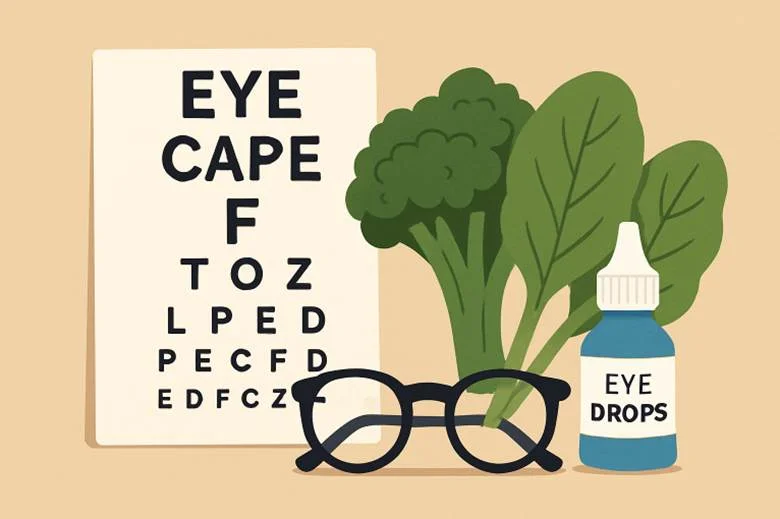Our ability to see shapes every moment of our lives, yet maintaining eye health is often neglected in our daily routines until problems surface. The proactive adoption of effective vision care habits not only helps prevent future problems but can also enhance present quality of life. For those seeking the latest solutions in eye care, Modern Vision Centers provides access to advanced diagnostics and treatments, supporting individuals in making informed decisions regarding their vision health.
By implementing practical strategies such as adjusting your diet, protecting your eyes from ultraviolet rays, and taking advantage of assistive technologies, anyone can foster strong, clear vision for years to come.
Balanced Diet: Fueling Eye Health
In Des Moines, IA, nutrition forms the foundation of good vision. Essential nutrients such as vitamins A, C, and E, omega-3 fatty acids, and zinc directly support eye functions and help protect against degenerative conditions. Green leafy vegetables like spinach and kale are rich in lutein and zeaxanthin—antioxidants proven to reduce the risk of chronic eye diseases. Carrots, a staple recommendation for eye health, are high in beta-carotene, while salmon and sardines deliver omega-3s, which support retinal health. Regularly including citrus fruits, nuts, seeds, and sweet potatoes can create a balanced plate that supports lifelong eye health. Functional drinks for vision health are specially formulated beverages enriched with vitamins, antioxidants, and essential nutrients that support and protect eye function.
Managing Screen Time: Reducing Digital Eye Strain
With the increasing prevalence of digital devices, digital eye strain—sometimes called computer vision syndrome—affects millions. Symptoms include dry eyes, headaches, and blurred vision. The simple 20-20-20 rule (every 20 minutes, look at something 20 feet away for 20 seconds) gives your eyes a much-needed rest. Adjusting the brightness and contrast of your screens, increasing text size, and minimizing glare by positioning your monitor away from direct light are also effective. Consider positioning your computer screen about an arm’s length away and slightly below eye level to enhance comfort.
UV Protection: Safeguarding Against Harmful Rays
Ultraviolet (UV) radiation from the sun can accelerate cataract development, risk macular degeneration, and even contribute to rare cancers of the eye. Wearing sunglasses that provide 100% UVA and UVB protection markedly reduces these risks. Wide-brimmed hats offer additional protection and help reduce exposure when outdoors. It’s vital to invest in high-quality sunglasses even on cloudy days as UV rays penetrate clouds. The Centers for Disease Control and Prevention offers further insights into proper sun protection for your eyes.
Regular Eye Checkups: Early Detection and Prevention
Consistent, thorough eye exams are among the most effective measures for early detection of conditions like glaucoma, diabetic retinopathy, and age-related macular degeneration. Many serious vision problems develop gradually without obvious symptoms, making regular checkups invaluable. Adults should undergo comprehensive eye exams every one to two years, or more frequently if there’s a family history of eye disease, diabetes, or other risk factors. Seniors often require closer monitoring. Preventive care ensures prompt intervention and better outcomes.
Impact of Smoking: A Clear Reason to Quit
Smoking remains a leading preventable contributor to vision loss. Smokers are at least twice as likely to develop age-related macular degeneration and have an increased chance of developing cataracts. Toxins in cigarette smoke damage ocular blood vessels and accelerate oxidative stress, which harms the retina and optic nerve. Stopping smoking—regardless of age—can arrest or significantly slow vision decline.
Vision and Mental Health: An Interconnected Relationship
Visual impairment has far-reaching effects beyond eyesight, impacting emotional and psychological well-being. Individuals experiencing vision loss report higher rates of anxiety, depression, and social withdrawal. According to research, addressing vision problems—even with corrective eyewear or assistive devices—can greatly improve mood and self-confidence. Support groups and counseling can also be vital, helping individuals adapt and preserve quality of life.
Assistive Technology: Enhancing Daily Life
Innovative assistive devices have transformed the landscape for individuals with low vision or blindness. Tools such as AI-powered wearable devices, magnifiers, reading machines, and smartphone apps facilitate navigation, reading, and daily tasks with greater independence. Devices can now identify faces, read text aloud, and help people safely cross streets or use public transport.
Conclusion: Integrating Eye Care into Daily Routines
Integrating vision health strategies into your lifestyle can yield long-lasting benefits, protecting not just your sight but overall well-being. By prioritizing a nutrient-rich diet, practicing screen hygiene, adopting UV protection, maintaining regular checkups, eliminating tobacco use, supporting mental health needs, and leveraging assistive technologies, you reinforce a holistic approach to safeguarding your eyesight. Simple, deliberate habits today can ensure sharp, healthy vision tomorrow and beyond.
Read more: Clever Storage Solutions for Busy Kitchens – Dimensions Script
This Simple Trick Will Convert WMV to MP4 Instantly
Red Flags to Watch for Before Clicking “Apply”


